Christine Valters Paintner's Blog, page 117
April 16, 2016
Embrace your inner sovereign ~ A love note from your online abbess
Dearest monks, artists, and pilgrims,
Illuminating the Way: Embracing the Wisdom of Monks and Mystics will be released very soon! I am very excited to share this work exploring twelve monks and mystics and the archetypes they embody and invite us to live more fully into. This week I share another excerpt from the book, this time on the archetype of the sovereign from the chapter on King David:
There is a story about Sir Gawain and Lady Ragnell which expresses the heart of sovereignty well. Sir Gawain must decide whether he wants Lady Ragnell to remain beautiful by day and ugly by night, or the other way around. He finally decides to leave the choice up to her and thereby grants her sovereignty over herself and she remains beautiful all the time.
Sovereignty is about being centered in your own power and taking full responsibility for meeting your needs. Sovereignty sounds so archaic in some ways, and yet it is one of the archetypal energies we find within us. The reason so many myths and fairy tales speak of kings and queens is that these figures reflect back something of ourselves.
Sovereignty is in many ways a midlife word. We don’t really begin to live into our own power until we have grown wise enough to recognize our limitations as well. In her book Queen of Myself: Stepping Into Sovereignty at Midlife, Donna Henes suggests that the traditional stages of maiden, mother, and crone for women is incomplete as women’s lifespans get longer. She suggests the addition of the queen or sovereign archetype between mother and crone as a time to really live into a sense of your own power. In the book King, Warrior, Magician, and Lover, author Robert Moore describes the King as a primal energy in men’s spirituality as well.
The sovereign is not a victim of life. Another favorite story is that of Persephone who was abducted into the Underworld by Hades. She eats the pomegranate seeds which will end up requiring her to stay there for part of the year. She becomes Queen, a movement from her victim role to stepping into her own power and fullness.
The sovereign accepts full responsibility for his or her choices in life. One of our central questions in life is “what is my task in this world?” Living into what that is may take a lifetime, but the sovereign helps us to claim the call that is our birthright and step into life with confidence. That gift is then offered with joy as a blessing to the world. No apologies need to be made for offering this essential contribution. Our inner Sovereign knows that the world will not be complete without our part of the greater vision. We participate in the co-creation of a more just and beautiful future each in our own unique way. We manifest the sovereign’s energy through centeredness, confidence, and calmness.
When I live from my inner Sovereign, I act out of a sense of agency which is a willingness to take action on my own behalf for the benefit of others, to exert my power or influence. This is not what we think we should be doing for others, but emerges from the very deep and wise place within us. My task is never determined by “shoulds” or shame. I take full responsibility for choosing this path and there is a sacramental quality to this path as it is a response to a holy calling.
When we are living fully from our inner Sovereign, we embody a calm and assertive energy. It manifests as strength, centeredness, security, stability, vitality, and joy. It is the part of us that overcomes the disorder and chaos of life, allowing creativity to arise from places that feel difficult or challenging. Sovereigns rule from their true self, the deepest and wisest parts of their being. There they listen to the holy stirrings within already. The sovereign calls us to fully claim our path in ways that are not anxious, but steady and sure.
A true sovereign blesses others by his or her presence. When we live into our own power in healthy and life-giving ways, we witness to a different way of being that empowers those around us. When we encounter someone who is deeply in touch with their sovereign, it does not matter their wealth or status in the world, we listen because they are in touch with their own wisdom and are not afraid to speak it aloud. Sovereigns create safe and healthy spaces for others to grow and develop their gifts and are never threatened by others living into their own power as well. Our world needs people of maturity, centeredness, wisdom, and peace to help us move into the next phase of our evolution together.
Of course Jesus embodies the sovereign as he enters into Jerusalem, claiming what he needs, and fitting the prophecies of royalty. To become fully mature monks in the world, we would do well to welcome our own inner sovereign as well.
Stop by Patheos to read the next reflection in my series on Practicing Resurrection and the call to wander for the love of God.
With great and growing love,
Christine
Christine Valters Paintner, PhD, REACE
Photo © Christine Valters Paintner
The post Embrace your inner sovereign ~ A love note from your online abbess appeared first on Abbey of the Arts.
April 14, 2016
Invitation to Poetry: Flowers Appear on the Earth

(C) Mary Anne Harris
Welcome to our Poetry Party!
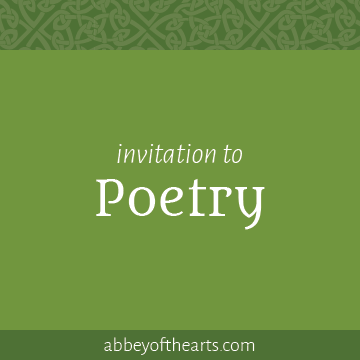 I select an image and suggest a theme/title and invite you to respond with your own poem.
I select an image and suggest a theme/title and invite you to respond with your own poem.
Feel free to take your poem in any direction and then post the image and invitation on your blog (if you have one), Facebook, or Twitter, and encourage others to come join the party! (If you repost the photo, please make sure to include the credit link and link back to this post inviting others to join us).
We began this month with a Community Lectio Divina practice with a passage from the Song of Songs on the arrival of spring.
We followed up with our Photo Party. We continue this theme in our Poetry Party this month. What does the image above evoke for you? Express this through poetry.
You can post your poem either in the comment section below* or you can join our Holy Disorder of Dancing Monks Facebook group and post there.
The post Invitation to Poetry: Flowers Appear on the Earth appeared first on Abbey of the Arts.
April 12, 2016
Monk in the World guest post: Heather van Warden
I am delighted to share another beautiful submission for the Monk in the World guest post series from the community. Read on for Heather van Warden's reflection on the many ways of hearing God:
To be fully receptive to God, we actually need to use all five of our senses. We receive God not only in “hearing” with our ears, but by feeling, smelling, tasting, and seeing our Maker…and then, by combining all those senses into the true receiving of our Lord. While I think we all need to receive God in this way, I believe that God communicates with each of us, in the way in which we, as individuals, will be most receptive. God comes to us. God provides us with the tools to receive what is being offered. We need to do nothing but be open to receive. The importance of God’s provision came to me in our small group when we were doing Lectio on Luke 1:26-28. The angel was sent; God sent…and Mary just obeyed and listened. God does it all…even opening our eyes, ears, and heart for us.
For me, the best venue to receive God is in silence…or at least infused with choral music. Music with words that I can understand, interferes with my receiving. It distracts. However, the blended chorus of a harmony of voices singing in a language I cannot understand, encompassing every sound, tone, and volume known to man and woman, infuses me with God, with peace. It puts my senses on hyperalert…yet not a hyper that makes my mind busy…a hyper that has all my senses at the ready. Longing. Yearning to hear the Voice.
A week after attending a retreat, I found myself longing to hear God and to receive guidance, as I had been able to, the entire time of the retreat. It had been such an intimate time with our Saviour. A time like I had never experienced before…a closeness. The touch, the warm, soft flesh accepting a kiss on the cheek; the tender hand taking mine and leading the way…I miss you Lord! I miss that time. However, God in his mercy has been so gracious, and just as our Lord came, sent, and provided to Mary at and after the Anunciation, so I have been graciously “spoken” to as well. The “words” are of a love, guidance, and a presence, that I have experienced through all five of my senses.
As I have devoured Buechner, and at times pushed him away, I have seen that God has met me wherever I have been. I have been met in words. Words are what reach my soul. Words are how God speaks to me and how I speak to God. While I process the words in my head (my very precious “headtime” as I call it), those words come from my heart…From God, from the Creator’s home in my soul. Words meet me in silence and words come from me silently, although my heart weeps sometimes with those words, my heart also rejoices and almost bursts with joy at those words. The emotions are silent, though not invisible. Anyone around me can see the “beyond time” look in my eyes, can see the glow from my face, the change in my posture when God speaks to me… particularly, at this time in my life, through Buechner. Buechner, for me, is the perfect vehicle to reach and connect with God through both beautiful and dark language. To my dismay, Buechner does not only evoke in me feelings of contentment. Having devoured every word of “The Sacred Journey” for dinner, I felt heartburn from “Telling Secrets” and a little reflux from “Now and Then.” I was ready to dismiss these books but Mark, my Spiritual Advisor, reminded me that God speaks to us in our aversions as well as our attractions. So what was it that put me off the other two books? The “Sacred Journey” is such a book of praise. It is so full of worship, so full of beautiful images of God and his relationship with us. These are easy and joyful words to digest. In “Telling Secrets” however, the book is much darker. It is not so much about the beauty of the Lord, as it is about our darkness and how God is there too. It is about looking to your past for answers to guide your future. While my past has not been terrible, I have had my share of depression, of unfulfilled dreams, of heartbreak, of abuse, of loneliness. I have realized in this exercise, that I am afraid of looking back. I am afraid of confronting the past, afraid of experiencing abuse again, but as Buechner says “…the same steel that secures your life against being destroyed secures your life also against being opened up and transformed by the holy power that life itself comes from.”(p.46, The Sacred Journey)
When I finally opened up that security gate, God was able to take up residence in my heart. Now, we have the on-going job of homeowners, to decorate and repair the home, TOGETHER. If that is to go smoothly, I need to slow down and listen. I need to spend time in contemplation of my Maker and the work going on inside me. God has a much better idea of how the house should look than do I but the plan is for us to share the work. It is up to me to be receptive to the suggestions that the Maker sends my way."
 Heather is a writer, historian, genealogist, avid researcher, a student of Christian theology, and a bookworm. She is the author of “Salvador’s Questions” – a Christian Children’s book about Heaven. She is currently researching an historical account of her forefathers and working on her blog, alightedpathsite.com
Heather is a writer, historian, genealogist, avid researcher, a student of Christian theology, and a bookworm. She is the author of “Salvador’s Questions” – a Christian Children’s book about Heaven. She is currently researching an historical account of her forefathers and working on her blog, alightedpathsite.com
The post Monk in the World guest post: Heather van Warden appeared first on Abbey of the Arts.
April 9, 2016
Illuminating the Way will be here soon! ~ A love note from your online abbess
Dearest monks, artists, and pilgrims,
 I am so excited that my ninth book will be out by the end of this month, Illuminating the Way: Embracing the Wisdom of Monks and Mystics (you can pre-order at the link).
I am so excited that my ninth book will be out by the end of this month, Illuminating the Way: Embracing the Wisdom of Monks and Mystics (you can pre-order at the link).
Here is an excerpt from the introduction:
My husband John and I pray lectio divina most mornings together. We also pray what is known as lectio continua, or the ancient practice of choosing a book of the scriptures and then praying through a couple of verses each day until we reach the end. It is a version of monastic stability, of staying with something through all of its ups and downs. We pray texts we might otherwise avoid. Earlier this year we worked through the Song of Songs in this way, and now we are praying the Psalms one by one.
One morning we found ourselves in the midst of Psalm 10, a difficult psalm of lament. Instead of reading all the way through to the end and finding immediate resolution in the psalmist's cry of hope to God, we sat each day with two verses at a time, with haunting questions about God's presence echoing through. Even more disturbing were the images of the “enemies,” the ones whose “mouths are filled with cursing, deceit, and opposition.” Or those who “murder the innocent” and “stealthily watch for the helpless.” The psalmist later calls out to God to “break the arm of the wicked.” As I sat with these images I wanted to turn away and say these have nothing to do with me and my peaceful life.
Yet, in prayer the invitation arose: What are the ways I deceive myself? What are the places of opposition within my own heart? How do I “murder” my own innocence? Or take advantage of that which feels helpless within? How do I fuel my own self-destruction?
I discovered the psalms as a beautiful gateway of awareness into my own inner multitude.
Our heads and hearts are full of crazy, often self-defeating, competing voices. We are each a multitude of differing energies and personalities. We contain within the parts that feel tender and ashamed, alongside the courageous and fierce, the joyful and giddy. It often feels easier to simply push the voices away, but it is exhausting.
A lot of our inner conflict comes from our stubborn refusal to make space for the multiplicity we contain. One of my favorite lines from the Rule of Benedict, that 6th-century source of great wisdom for daily living, is “All guests who present themselves are to be welcomed as Christ, for he himself will say: I was a stranger and you welcomed me.” I love this invitation to welcome that which feels the most strange as the very face of God. The door might be outside of us, but just as easily it is within. We each have parts of ourselves we try to push away.
These voices often fight within us for primacy. They each want to define who we are. Especially loud can be the inner Judge, who thinks she knows everything. She sounds very authoritative.
There is a deeper and wiser voice, which is the Self, or sometimes called the Inner Witness. It is the calm and compassionate part that can sit in the center of all this chaos and behold it all. It is the part we develop through meditation and is not carried away by conflicting inner demands. This is the voice of the soul. In our archetypal work, Christ could be considered the exemplar of this presence within us.
When we continue to follow the Judge, or the inner Critic, or any of the especially loud and forceful voices inside of us, without recourse to the whole range of who we are, we often find ourselves full of self-doubt, insecurity, and become depleted.
These voices often originated as a way of protecting ourselves. The Judge can help us to discern what is true and good. The Critic can help cut away the excess.
Not all of the voices within us are “negative.” Many of these energies can offer us tremendous resources for living in an empowered way. Some of my favorites are the inner Warrior, who helps me to set healthy boundaries. My inner Orphan reminds me that I have a lot of tenderness within, which just wants to be witnessed and not fixed. My inner Lover calls me to follow my passions in life, to remember that what I am in love with—whether ideas or communities or people—will ignite vitality in my work.
Each archetype has a shadow side and a light side. Exploring them illuminates our places of growth, helps break old patterns, calls us to step fully into our deepest passions in service to the world, and ultimately bring us to a place of greater internal freedom. They can be deeply supportive of the creative process, opening up access to different resources within us. The archetypes can offer us a powerful support for our creative living and reflection on what our passions are and what holds us back. They connect us to the place where Spirit is alive and moving in us. The archetypes, in their fullness, are also different names for and dimensions of the divine.
In this book I explore twelve monks and mystics and the archetypes they help us to illuminate. St. Francis opens up the Fool for us and St. Hildegard the Visionary. They help us in welcoming back all the lost parts of ourselves for a fuller and richer experience of the inner life.
The psalms can become a mirror to the shadow places within me. But other verses can also call forth the beauty and longings of my heart. They can remind me of the grace found in boundaries, in tenderness, in passion. You are a multitude. My deepest hope in this book is that it inspires you welcome in all of the parts of you.
Stop by Patheos for the next reflection in my series on Practicing Resurrection this season and read about seeing the world with new eyes.
With great and growing love,
Christine
Christine Valters Paintner, PhD, REACE
Photo © Illuminating the Way book cover
The post Illuminating the Way will be here soon! ~ A love note from your online abbess appeared first on Abbey of the Arts.
April 7, 2016
Invitation to Photography: Flowers Appear on the Earth
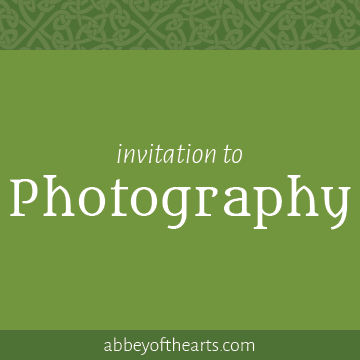 Welcome to this month's Abbey Photo Party!
Welcome to this month's Abbey Photo Party!
I select a theme and invite you to respond with images.
We began this month with a Community Lectio Divina practice with our reflection on some of the words from the Song of Songs in celebration of spring’s arrival
I invite you for this month's Photo Party to hold these words in your heart as you go out in the world to receive images in response. As you walk be ready to see what is revealed to you as a visual expression of your prayer.
You can share images you already have which illuminate the theme, but I encourage you also to go for a walk with the theme in mind and see what you discover.
You are also welcome to post photos of any other art you create inspired by the theme. See what stirs your imagination!
How to participate:
You can post your photo in the comment section below* (there is now an option to upload a file with your comment – your file size must be smaller than 1MB).
You can also join our Holy Disorder of Dancing Monks Facebook group and post there. Feel free to share a few words about the process of receiving this image and how it speaks of the harvest for you.
The post Invitation to Photography: Flowers Appear on the Earth appeared first on Abbey of the Arts.
April 5, 2016
Monk in the World guest post: Geralyn Farley
I am delighted to share another beautiful submission for the Monk in the World guest post series from the community. Read on for Geralyn Farley's reflection on Beauty Surprises:
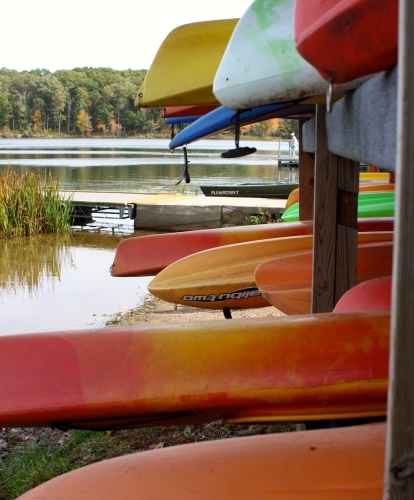 "Sunday was one of those memorable, picture perfect days, one where I would normally have camera in hand or watercolors and brushes close by. But on that day, I decided to challenge myself to take none of that with me. Freedom was mine to enjoy the moment, to savor the experience, to live fully through all of my senses. Overcome by the shear beauty of this event, I did decide to paint a picture and take a photo…with words alone. I share it with you.
"Sunday was one of those memorable, picture perfect days, one where I would normally have camera in hand or watercolors and brushes close by. But on that day, I decided to challenge myself to take none of that with me. Freedom was mine to enjoy the moment, to savor the experience, to live fully through all of my senses. Overcome by the shear beauty of this event, I did decide to paint a picture and take a photo…with words alone. I share it with you.
“I asked the earth, I asked the sea and the deeps, among the living animals, the things that creep. I asked the winds that blow, I asked the heavens, the sun the moon, the stars and to all things that stand at the door of my flesh…My question was the gaze I turned to them. Their answer was their beauty.” ~St. Augustine
The final Sunday of Summer and Beauty has a way of surprising. We are at the threshold of Summer’s farewell kiss and Autumn’s welcoming embrace. We have no expectations this afternoon, but to be in the moment, in the quiet, peaceful, stillness of Nature’s living room.
September’s breeze caresses our faces while making choppy waves upon the lake. Our sunrise yellow kayak bobs up and down and back and forth. Our paddles in unison slice through the water, gliding us across the lake and into one of many secret coves. We are magically immersed in a Monet painting. We wait for something or nothing, and sit contentedly in the warmth of the sun’s glow.
“But they that wait upon the Lord…”
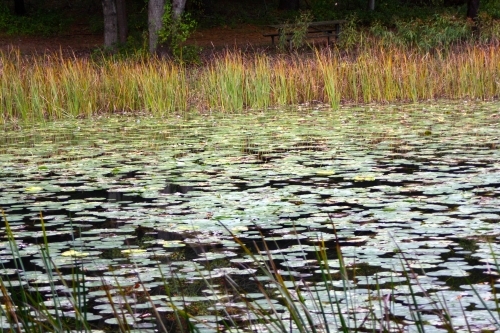 Our gaze begins to behold Beauty around us: water lily pads with acorns and iridescent dragonflies upon them, white and yellow lilies beckoning us to peer in, the sky dappled with flocks of sheep and trumpeting angels, a flotilla of red leaves passing by, calico trees gently dabbed with reds and yellows and golds.
Our gaze begins to behold Beauty around us: water lily pads with acorns and iridescent dragonflies upon them, white and yellow lilies beckoning us to peer in, the sky dappled with flocks of sheep and trumpeting angels, a flotilla of red leaves passing by, calico trees gently dabbed with reds and yellows and golds.
We navigate the shoreline with its fallen tree limbs and pond grasses, weaving in and out under a leafy canopy. We then venture out into the middle of the lake. We own this space; it is ours. In gratitude, we embrace the sky.
Gliding on further down the lake, we happen upon 3 ducks, paddling in chevron formation, rolling up and down and occasionally tipping tails upward while diving for fish. Aware of our presence, they move along, our kayak following in their wake. Then, in unison and without warning, they take flight in perfect formation, honking in chorus with glistening wings and orange wellies tucked behind…more Beauty to behold.
Meandering along, we spot some silver maples with their distinctive gray bark, gnarled roots weathered from shore waters and bushes laden with berries, ripe for the picking by southern-bound birds. Our paddles pick up corkscrew grasses, confetti curls placed there for Nature’s wonderful party celebration of the seasons, our own ticker-tape parade. We are invigorated!
“…shall renew their strength…”
As if our senses haven’t feasted enough, we spy something so distinctive and so unusual: a large magnificent bird riding the wind so gracefully and so majestically. The lake is home to a variety of birds from large to small, from hawks and blue herons to Baltimore orioles and red wing blackbirds. This creature is unique with its dark body, white head, and matching fan-tailed feathers and broad wingspan. This is an American Bald Eagle. His acrobatic display is pure entertainment, planned just for us. Soaring above the trees, diving for fish, resurrecting again circling on high, around and around, creating figure 8’s. Then, as if aware of our delight, he arches across the sky and then makes his way towards us. He then swoops low overhead, like a pilot in an air show. Our faces alight with wonder and joy. He looks at us and we look at him.
“…they shall mount up with wings as eagles…” Isaiah 40:31
He carries our hearts high up into the clouds. He ascends to the heavens and to the far ends of the earth, then disappears from sight. Beauty surprises once again.
No camera or sketch pad, no watercolors or brushes just the blank spaces of our imagination we create a memory that changes our hearts and souls forever. "
*Note: I do not purport to be a professional writer or poet, just an artist without camera or paints, who had to share an event or she would explode! ~GJF~
**Geralyn's photographs were take at Piney Run Lake in Autumn of 2014, almost a year before her article was written.
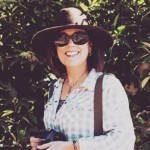 Geralyn is from Maryland, where she and her husband live and where they raised their twin daughters. Geralyn has been an Elementary School Teacher, Reading Specialist, adjunct college professor, artist, musician, writer. She loves gardening, cooking, creating beauty in her home and life. Geralyn is Roman Catholic, was involved with the Charismatic Renewal and now has a contemplative walk with God.
Geralyn is from Maryland, where she and her husband live and where they raised their twin daughters. Geralyn has been an Elementary School Teacher, Reading Specialist, adjunct college professor, artist, musician, writer. She loves gardening, cooking, creating beauty in her home and life. Geralyn is Roman Catholic, was involved with the Charismatic Renewal and now has a contemplative walk with God.
The post Monk in the World guest post: Geralyn Farley appeared first on Abbey of the Arts.
April 4, 2016
Self-Study Sale through May 16th (Buy two get one free!)
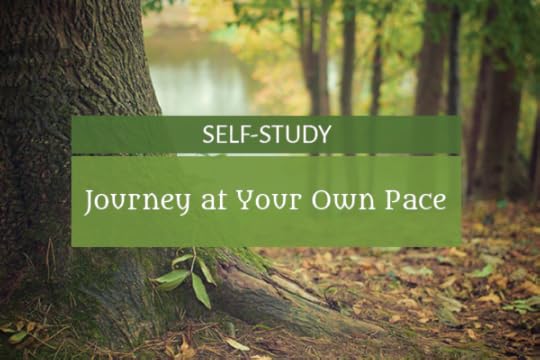 Abbey of the Arts has 14 fabulous self-study retreats available so that you can journey at your own pace. We are offering a special sale through May 16th – purchase two self-study programs and you will get a third one of equal or lesser value free. Immerse yourself in contemplative photography, lectio divina, praying with the elements, Celtic spirituality and more!
Abbey of the Arts has 14 fabulous self-study retreats available so that you can journey at your own pace. We are offering a special sale through May 16th – purchase two self-study programs and you will get a third one of equal or lesser value free. Immerse yourself in contemplative photography, lectio divina, praying with the elements, Celtic spirituality and more!
If you register for our upcoming Way of the Monk, Path of the Artist Online Retreat and purchase one self-study retreat in addition, you will also receive one free.
Self-study retreats stay available to you in an ongoing way, so you can choose to move through the materials when it is convenient for you.
After you have purchased your two self-study retreats (or registered for Way of the Monk, Path of the Artist and one self-study retreat) email Liz at dancingmonk@abbeyofthearts.com and request which retreat you would like for your free choice.
RULES: You can purchase Women on the Threshold or Live it to Give it for your first two, but these can’t be the free programs. The free program chosen must be of less value than either of the two purchased.
Click here for the full selection of self-study retreats>>
The post Self-Study Sale through May 16th (Buy two get one free!) appeared first on Abbey of the Arts.
April 2, 2016
Be nourished by the wisdom of Celtic monasticism – join us! ~ A love note from your online abbess
 Yahweh says this:
Yahweh says this:
Put yourselves on the ways of long ago
Enquire about ancient paths:
Which was the good way?
Take it then, and you shall find rest.
-Jeremiah 6:16
Dearest monks, artists, and pilgrims,
The overall theme for our upcoming Soul’s Slow Ripening online retreat is one that has been emerging in me for several years. I love the image of ripening as an organic and slow process. Discernment calls us to tend to those moments of ripeness, and when we want to pluck the fruit before it is ready, and so hasn’t developed its full sweetness.
The ancient Christian monastic traditions, especially desert, Celtic, and Benedictine, offer great wisdom for this journey of unfolding. They understood that the soul’s ripening is never to be rushed, and takes a lifetime of work.
We can grow impatient when life doesn’t offer us instant insights or gratification. We call on the wisdom of these monks to accompany us, to teach us what it means to honor the beauty of waiting and attending and witnessing what it is that wants to emerge, rather than what our rational minds want to make happen. The soul always offers us more richness than we can imagine, if we only make space and listen. That is the gift of this threshold time, learning to rest into darkness and mystery, and deeper ways to listen.
The longer I live in this wondrous landscape of Ireland, the more deeply I am drawn into the Celtic practices, stories, and traditions of monastic spirituality. The text above from Jeremiah is a favorite of mine. When we are at a crossroads or threshold in our lives, we are invited to pause and listen. Ask about the ancient pathways and which was the good way? Which was the way that brought life and nourishment?
If you long for a journey which isn’t a 10-step linear set of things to do to discover the deep dreams of your heart, but is a slow, unfolding process with practices which help to root you and support you in listening then we warmly welcome you to join us.
The icon above is of St. Gobnait, one of the women saints in the Irish tradition. She was called in a dream from the place where she lived on the island of Inisheer to journey until she saw nine white deer. Then she would be at the place of her resurrection. The Celtic monastic tradition is filled with these kinds of stories, of dreams pointing in new directions, of wandering until the right place is found. As we move through the season of Easter, consider practicing resurrection with these wise guides.
Please join us for Soul’s Slow Ripening: Celtic Wisdom for Discernment. The journey begins tomorrow through the riches of monastic wisdom, especially what we find in the Irish tradition. Our companions will be St. Kevin, Brigid, Patrick, Ita, Gobnait, Ciaran, Brendan, and Columcille. If you are in a place of listening to your life for what thresholds might be beckoning, this retreat will be a lovely companion on the way.
Stop by Patheos for further reflection from me and my 8-week series on Practicing Resurrection.
With great and growing love,
Christine
Christine Valters Paintner, PhD, REACE
Photo © St. Gobnait dancing monk icon by Marcy Hall at Rabbit Room Arts
The post Be nourished by the wisdom of Celtic monasticism – join us! ~ A love note from your online abbess appeared first on Abbey of the Arts.
April 1, 2016
Christine's poem wins second place in the Galway University Hospital Arts Trust Annual Poetry Competition
I am delighted to come in second place in the Galway University Hospital Arts Trust Annual Poetry Competition (and I had two poems on the shortlist). Here is the poem I submitted:
This is not a poem
but a rain-soaked day keeping me inside
with you and you loving me like a storm.
This is a record of a hundred mornings
when the sun lifted above the stone hills outside my window.
This is not a poem but me standing perfectly still on the edge of the lake
in autumn, watching a hundred starlings like prayer flags fluttering.
This is my face buried in May’s first pink peony,
petals just now parting, eyes closed, inhaling.
This is the place where clocks no longer matter unless
it is the dusty gold watch which belonged to my grandfather.
This is not a poem but me standing desolate in a parade
of white gravestones, when a single bluebird lands and sings.
This is the bunch of Gerbera daisies you handed to me one foggy
February afternoon, pale yellow like the long-forgotten sun.
This is the first bite of bread after too many hungry days,
this is my grandmother whispering her secrets to me after dusk.
This is not a poem, but me taking off my clothes
and stepping eagerly into the cold mid-December sea.
This is the silence between breaths and in that stillness
this is me saying yes and yes and yes.
Christine Valters Paintner
The post Christine's poem wins second place in the Galway University Hospital Arts Trust Annual Poetry Competition appeared first on Abbey of the Arts.
March 31, 2016
Community Lectio Divina: Flowers Appear on the Earth
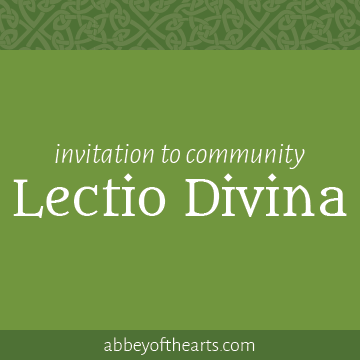 In the northern hemisphere we are moving toward springtime and the ever-growing light. We invite you to pray with this text from the Song of Songs:
In the northern hemisphere we are moving toward springtime and the ever-growing light. We invite you to pray with this text from the Song of Songs:
For see, the winter is past,
the rains are over and gone.
The flowers appear on the earth,
the time of pruning the vines has come,
and the song of the dove is heard in our land.
The fig tree puts forth its figs,
and the vines, in bloom, give forth fragrance.
Arise, my beloved, my beautiful one,
and come!
–Song of Songs 2:11-13
How Community Lectio Divina works:
Each month there will be a passage selected from scripture, poetry, or other sacred texts (and occasionally visio and audio divina as well with art and music).
How amazing it would be to discern together the movements of the Spirit at work in the hearts of monks around the world.
I invite you to set aside some time this week to pray with the text below. Here is a handout with a brief overview (feel free to reproduce this handout and share with others as long as you leave in the attribution at the bottom – thank you!)
Lean into silence, pray the text, listen to what shimmers, allow the images and memories to unfold, tend to the invitation, and then sit in stillness. The text for prayer is above.
After you have prayed with the text (and feel free to pray with it more than once – St. Ignatius wrote about the deep value of repetition in prayer, especially when something feels particularly rich) spend some time journaling what insights arise for you.
How is this text calling to your dancing monk heart in this moment of your life?
What does this text have to offer to your discernment journey of listening moment by moment to the invitation from the Holy?
What wisdom emerged that may be just for you, but may also be for the wider community?
SHARING YOUR RESPONSES
Please share the fruits of your lectio divina practice in the comments below (at the bottom of the page) or at our Holy Disorder of Dancing Monks Facebook group which you can join here. There are over 4000 members and it is a wonderful place to find connection and community with others on this path.
You might share the word or phrase that shimmered, the invitation that arose from your prayer, or artwork you created in response. There is something powerful about naming your experience in community and then seeing what threads are woven between all of our responses.
*Note: If this is your first time posting, or includes a link, your comment will need to be moderated before it appears. This is to prevent spam and should be approved within 24 hours.
The post Community Lectio Divina: Flowers Appear on the Earth appeared first on Abbey of the Arts.



